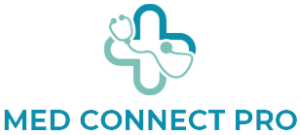In the modern age of medical education, traditional methods are rapidly being enhanced by technological advancements. One of the most impactful innovations is the use of a 3D anatomy model. Unlike two-dimensional diagrams and cadaver dissections, these models provide a dynamic and interactive way for students and professionals to explore the human body with precision and clarity.
The 3D anatomy model represents a breakthrough in anatomical learning by allowing users to examine organs, muscles, bones, and tissues from every possible angle. This flexibility not only enhances understanding but also helps bridge the gap between theory and practice. In environments where access to cadavers is limited, such models offer a practical and ethical alternative for deep anatomical study.
Medical schools and healthcare training programs are increasingly integrating the 3D anatomy model into their curricula. The interactive nature of these models supports varied learning styles and encourages engagement. Whether accessed via computer, tablet, or virtual reality headset, the models can simulate real-life anatomical scenarios, fostering a more comprehensive learning experience.
One of the standout features of a 3D anatomy model is its adaptability. Users can isolate specific systems, such as the circulatory or nervous system, and even zoom in to study intricate structures like nerve endings or capillaries. This level of detail cannot be achieved through traditional textbooks or flat images, making the 3D anatomy model a superior educational tool.
Moreover, a 3D anatomy model is a valuable resource beyond academic institutions. It plays an important role in patient education, where doctors can use the model to visually explain diagnoses, surgical procedures, or treatment plans. This enhances communication between healthcare providers and patients, helping to build trust and improve healthcare outcomes.
Another advantage of the 3D anatomy model lies in its continuous evolution. Software updates frequently incorporate the latest medical research, ensuring that users always have access to accurate and up-to-date anatomical information. This is particularly beneficial for practicing professionals who need to stay current in a rapidly changing medical landscape.
The development of the 3D anatomy model has also spurred innovation in other sectors, including physical therapy, sports science, and veterinary medicine. For instance, physiotherapists can use the models to demonstrate muscle movement and joint function, allowing for more personalized rehabilitation plans. In each of these fields, the 3D anatomy model supports more effective teaching and practice.
Accessibility is another key benefit of the 3D anatomy model. Many models are available through online platforms, enabling users from remote areas or underserved communities to gain access to high-quality anatomical resources. This democratization of medical education has the potential to close the educational gap between institutions with differing levels of resources.
The immersive experience offered by a 3D anatomy model also aligns with current trends in gamified learning. Students can engage in interactive quizzes, simulations, and virtual dissections, making the learning process not only informative but also enjoyable. This approach helps retain interest and boosts memory retention, especially among younger learners.
Furthermore, the integration of augmented reality (AR) and virtual reality (VR) into the 3D anatomy model has taken learning to a new dimension. With AR and VR, students can experience the human body as if they were inside it, navigating through organs and systems in real time. This kind of experiential learning is unmatched by traditional methods and exemplifies the potential of the 3D anatomy model in education.
Despite its many benefits, the 3D anatomy model is not without challenges. High-quality models can be costly, and some institutions may struggle with budget constraints. Additionally, the technology requires regular updates and maintenance to ensure accuracy. However, as the technology becomes more widespread, costs are gradually decreasing, making the models more accessible over time.
Collaboration is another area where the 3D anatomy model proves invaluable. Students and professionals across the globe can work together on complex cases or share knowledge using the same digital anatomy platforms. This global exchange of ideas fosters innovation and promotes a more connected medical community.
Teachers and instructors also benefit from the 3D anatomy model by being able to customize content for their classes. Lessons can be tailored to focus on specific topics, and instructors can track student progress through interactive tools embedded in the platforms. This allows for more effective instruction and improved learning outcomes.
For aspiring surgeons, the 3D anatomy model provides an unparalleled preparatory tool. It allows them to plan and practice procedures virtually before entering the operating room, minimizing risk and improving precision. This practical application of the 3D anatomy model supports safer and more effective surgical training.
As we look to the future, the role of the 3D anatomy model in education and healthcare is only expected to grow. With the advancement of artificial intelligence and machine learning, these models will become even more personalized and intelligent. The next generation of healthcare professionals will be shaped by this technology, making it a cornerstone of modern medical training.
In conclusion, the 3D anatomy model is transforming the way we learn and teach about the human body. By offering interactive, accurate, and immersive experiences, it addresses the limitations of traditional methods and paves the way for more effective education and patient care. Whether in the classroom, clinic, or at home, the 3D anatomy model is a powerful tool for the present and future of medicine.
